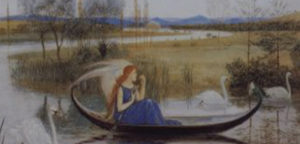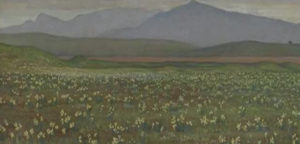
1845 - 1915
Walter Crane

description
Walter Crane is an English painter and graphic artist, illustrator, designer, writer and publicist. Walter Crane achieved popularity as a children’s book illustrator, talented not only in illustrating novels of classics but also his works.
The first teacher of the artist was his family member – his father Thomas Crane, who professionally studied painting and was known as a wonderful miniature master. In his father’s studio, Walter took his first steps in the visual arts, drawing numerous portraits, scenes from everyday life, nature – everything that surrounded him. Noticing his son’s ability to paint, he sent him to study at the engraving workshop of William Linton, whose radical moods influenced the worldview of the beginning artist to a large extent. In particular, made him interested in socialist ideas.
The artist was engaged in the design of several magazines, created sketches of tapestries, textiles, carpets, mosaics, ceramics and stained glass. He was a manager of the exhibitions of the Society of Arts and Crafts, which had a significant influence on the development of applied art and design throughout the world. Crane was also engaged in teaching, wrote several scientific works in the field of design, which were in high demand throughout Europe. Since 1898, the artist held a responsible post as a head of the Royal College of Art in London. The artist’s works are in the Louvre; the Uffizi Gallery (Florence) ordered him a self-portrait.
Key ideas:
– The work of Walter Crane, which reached its heyday at the turn of the twentieth and nineteenth centuries, is part of a pan-European movement for the renewal of art. It demonstrated the fusion of all kinds of artistic expression into a single whole and the formation of a new attitude towards the consumer. The artist’s work covered a wide range of spheres: painting, design, applied art and literature.
– At the beginning of his career, Cran engaged exclusively in painting. His paintings evolved from academic portraits and landscapes to complex philosophical paintings, saturated with symbols and allusions. However, he showed himself the most clearly as an illustrator of children’s fairy tales – such as Little Red Riding Hood, Prince Frog, Sleeping Beauty and many others (he created rich illustrations for more than fifty books).
– The artist believed that the illustration should develop the artistic taste of the child and at the same time, be easy to perceive and colourful. This can be achieved with the help of simple, laconic forms and bright open colours, which children like so much. This approach has fully justified itself. Books, designed by the artist, were extremely popular and in-demand among the public. An expressive, clear line, dynamic composition and bright imagination of the artist caused admiration not only in children but also in adults. Walter Crane became a founder of a completely new approach to the design of the children’s book and revolutionized this direction. Among the “adult” authors, whose works the artist illustrated, was his favourite poet Shelley.
– In addition, the artist played a large role in the development of design art. Unlike the Pre-Raphaelites, whose aesthetics were sublime and far from the people, Crane did much to bring art into the everyday life of all classes. Together with publisher Edmund Evans, he created a series of inexpensive cognitive books for children, and also dealt with the design of various consumer goods: furniture, wallpapers, carpets, ceramic tiles and much more. Thanks to Walter Crane, British art was enriched with fine examples of applied art in the style of art nouveau.
1845
1860
1862
1865
1871
1888
1892
1895
1900
1912 - 1915
1915
The birth
Met Edmund Evans

“Lady Shalotta”
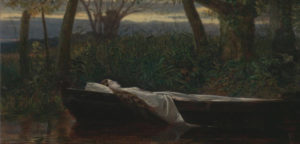
Crane became a member of the Liberal Party
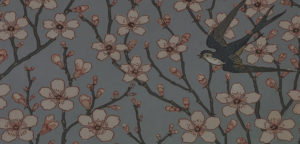
The artist married and traveled to Italy
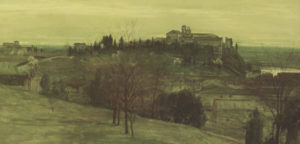
Became one of the organizers and the first president of the Society of Arts and Crafts

Published his treatise "The Tasks of Decorative Arts"
Published his treatise “The Tasks of Decorative Arts”.
Was elected an honorary member of the Munich Academy
Was elected an honorary member of the Munich Academy. At the same time, he became the director of the Manchester School of Art, which he headed for a long time. A book “Decorative book illustration” was published in 1896. From 1897, Crane headed the Royal College of Art, wrote the textbook “The Basics of Drawing.”
“Lines and shapes”
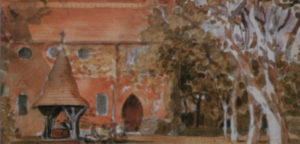
Created his self-portrait to order of the Florentine Uffizi Gallery

The death
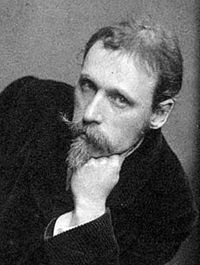
Walter Crane
On Artist
flow
Symbolism
friends
William Morris
Simeon Solomon
artists
Edward Burne-Jones
Sandro Botticelli
Thomas Crane
William James Linton
John Ruskin
Andrea Mantegna
Vittore Carpaccio
Gentile Bellini
By Artist
flow
Neo-romanticism
Modern
friends
Heywood Sumner
Philip Spikmen Webb
Edward Onslow Ford
artists
Louis Comfort Tiffany

